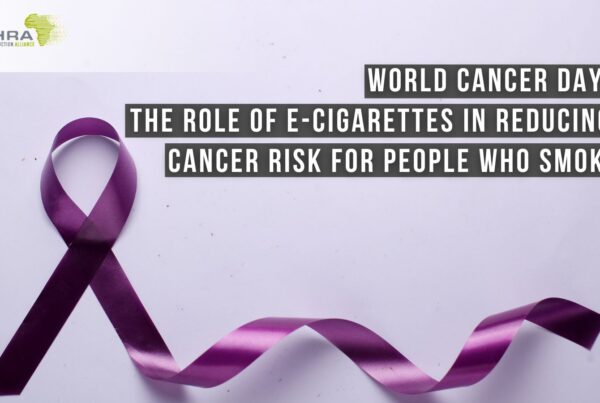What Is Tobacco Harm Reduction?
Tobacco Harm Reduction is a public health strategy aimed at minimizing the health risks associated with tobacco use. Rather than focusing solely on quitting all forms of nicotine, THR emphasises switching to safer alternatives that significantly reduce exposure to harmful chemicals found in combustible cigarettes.
Why Is Smoking Harmful?
The primary health risks of smoking come from the combustion process. When tobacco burns, it produces thousands of harmful chemicals, including tar and carbon monoxide, which are the main culprits behind smoking-related diseases such as lung cancer, heart disease, and chronic obstructive pulmonary disease (COPD). Contrary to popular belief, nicotine—while it forms dependency—is not the primary cause of these illnesses.
How Does THR Work?
THR focuses on providing people who smoke with access to less harmful nicotine delivery systems. By switching to these alternatives, people who smoke can significantly reduce their exposure to toxic chemicals while still satisfying their nicotine cravings.

Some of the most popular THR products include:
- E-Cigarettes (Vapes): These devices heat a liquid containing nicotine and flavouring to produce vapour, eliminating the combustion process.
- Heated Tobacco Products (HTPs): HTPs heat tobacco to release nicotine-containing vapour without burning it, resulting in fewer harmful chemicals.
- Oral Nicotine Pouches: These smoke-free products deliver nicotine through the lining of the mouth without involving tobacco.
- Snus: A traditional smokeless tobacco product that has been shown to reduce harm compared to smoking.
The Evidence Behind THR
Numerous studies support the effectiveness of THR products in reducing harm. For example:
- Public Health England (now the UK Health Security Agency) found that vaping is at least 95% less harmful than smoking.
- Countries like Sweden, where snus is widely used, have some of the lowest smoking-related disease rates in the world.
- Research shows that people who smoke, who switch completely to THR products experience significant health improvements, including better lung function and reduced risk of heart disease.
Who Benefits from THR?
THR is particularly beneficial for:
- People Who Smoke That Struggle to Quit: Many people who smoke find it challenging to quit nicotine entirely. THR offers a practical middle ground, allowing them to reduce harm while maintaining nicotine use.
- Current People Who Smoke with Health Concerns: Switching to safer alternatives can lead to rapid health improvements for those already experiencing smoking-related issues.
- Public Health Systems: By reducing smoking-related illnesses, THR has the potential to ease the financial burden on healthcare systems globally.
Addressing Common Misconceptions
Despite its potential, THR faces resistance due to widespread misinformation. Here are some key clarifications:
- Nicotine is not the enemy: While nicotine is a dependency-forming compound, it is not the leading cause of smoking-related diseases.
- THR products are not “just as bad” as smoking: Scientific evidence overwhelmingly shows that these products are significantly less harmful than combustible cigarettes.
- Youth use does not undermine THR: Proper regulations can minimise youth access without depriving adults who smoke of harm-reduction tools.
How to Get Started with THR
If you’re a person who smokes and is looking to reduce harm, here are a few steps to consider:
- Educate Yourself: Learn about the different THR products available and how they work.
- Choose the Right Product: Select a product that suits your lifestyle and nicotine needs. Consult with a healthcare provider if needed.
- Source Products Responsibly: Always purchase from reputable brands to ensure product safety and quality.
- Make the Switch: Transitioning from smoking to a THR product may take time. Be patient with yourself and seek support if needed.
Final Thoughts
Tobacco Harm Reduction offers a lifeline for millions worldwide, providing a pathway to reduce the risks associated with smoking significantly. While quitting all forms of nicotine remains the ideal goal for many, THR recognises that for some, reducing harm is a more achievable and realistic first step.
If you’re ready to explore safer alternatives, now is the time to take charge of your health and make an informed choice. Tobacco Harm Reduction isn’t just about quitting smoking—it’s about saving lives.
THR Topics
Popular Posts
Quick Links
Women in THR
Related Posts
 Letter to the World Health Organization (WHO)
Letter to the World Health Organization (WHO)
Letter to the World Health Organization (WHO)
 Public Health implications of vaping in Germany
Public Health implications of vaping in Germany
Public Health implications of vaping in Germany
 Public Health implications of vaping in the United States of America
Public Health implications of vaping in the United States of America








